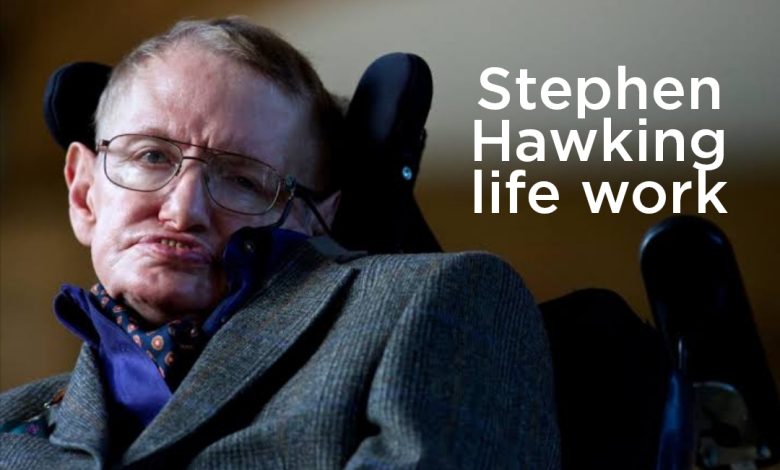
Stephen Hawking, one of the most renowned scientists of the 20th and early 21st centuries, made groundbreaking contributions to our understanding of the universe. Despite facing significant physical challenges, Hawking’s brilliant mind and indomitable spirit allowed him to push the boundaries of theoretical physics and cosmology. This article explores the life, work, and lasting impact of this extraordinary scientist.
Early Life and Education
Stephen William Hawking was born on January 8, 1942, in Oxford, England. His birth coincided with the 300th anniversary of Galileo’s death, a fact that Hawking often noted with amusement. Growing up in a family of intellectuals, young Stephen showed an early aptitude for mathematics and science.
Hawking’s educational journey included:
- St. Albans School in Hertfordshire
- University College, Oxford, where he studied physics
- Trinity Hall, Cambridge, where he pursued his Ph.D. in cosmology
At Oxford, Hawking initially found his studies unchallenging and spent much of his time involved in the college boat club. However, he graduated with a first-class honors degree in natural science, paving the way for his graduate studies at Cambridge.
The Onset of ALS
In 1963, at the age of 21 and shortly after beginning his Ph.D. studies, Hawking was diagnosed with a rare early-onset and slow-progressing form of motor neuron disease called amyotrophic lateral sclerosis (ALS), also known as Lou Gehrig’s disease. Doctors initially gave him only two years to live.
Despite the devastating diagnosis, Hawking refused to let it derail his academic pursuits. With the support of his first wife, Jane Wilde, whom he married in 1965, Hawking continued his research and completed his Ph.D. in 1966 with a thesis titled “Properties of Expanding Universes.”
Groundbreaking Scientific Work
Throughout his career, Hawking made numerous contributions to theoretical physics and cosmology. Some of his most significant work includes:
Singularity Theorems
Working with mathematician Roger Penrose in the late 1960s, Hawking helped develop singularity theorems. These theorems demonstrated that singularities (points where spacetime curvature becomes infinite) are not mathematical artifacts but real phenomena predicted by Einstein’s general theory of relativity.
Black Hole Radiation
In 1974, Hawking proposed that black holes are not entirely black but emit radiation, now known as Hawking radiation. This groundbreaking idea combined quantum mechanics with general relativity, suggesting that black holes can slowly evaporate over time.
The No-Boundary Proposal
In collaboration with James Hartle, Hawking developed the no-boundary proposal in the 1980s. This concept suggests that the universe has no boundary in imaginary time, attempting to describe the initial conditions of the universe without the need for a singularity at the Big Bang.
A Brief History of Time
In 1988, Hawking published “A Brief History of Time,” a book explaining complex cosmological concepts to a general audience. The book became an international bestseller, selling over 10 million copies and cementing Hawking’s status as a public intellectual.
Academic Career and Honors
Despite his physical limitations, Hawking had a distinguished academic career:
- Research Fellow at Gonville and Caius College, Cambridge (1965)
- Professor of Gravitational Physics at Cambridge (1977)
- Lucasian Professor of Mathematics at Cambridge (1979-2009), a position once held by Isaac Newton
- Director of Research at the Centre for Theoretical Cosmology, Cambridge (2009-2018)
Hawking received numerous awards and honors throughout his career, including:
- Fellow of the Royal Society (1974)
- Commander of the Order of the British Empire (CBE) (1982)
- Companion of Honour (1989)
- Presidential Medal of Freedom (2009)
- Copley Medal from the Royal Society (2006)
Communication and Technology
As Hawking’s condition progressed, he lost the ability to speak and move independently. However, advances in technology allowed him to continue communicating and working:
- In the 1980s, he began using a speech-generating device controlled by hand movements
- Later, he used a single cheek muscle to control his communication device
- His computerized voice became iconic and recognizable worldwide
Hawking’s ability to adapt to these technologies and continue his work despite severe physical limitations was a testament to his determination and intellect.
Public Figure and Cultural Impact
Beyond his scientific work, Hawking became a cultural icon. He appeared in various television shows, including “The Simpsons,” “Star Trek: The Next Generation,” and “The Big Bang Theory.” His life story was portrayed in the 2014 film “The Theory of Everything,” with Eddie Redmayne winning an Oscar for his portrayal of Hawking.
Hawking was also known for his wit and sense of humor. He often used his public platform to address important issues, including:
- The dangers of artificial intelligence
- The need for space exploration
- Environmental concerns and climate change
Later Years and Legacy
In his later years, Hawking continued to work on theoretical physics problems and publish books for general audiences. He passed away on March 14, 2018, at the age of 76, having far outlived the initial prognosis given at his ALS diagnosis.
Hawking’s legacy extends beyond his scientific contributions. He inspired millions worldwide with his resilience, intellectual curiosity, and determination to understand the universe despite immense physical challenges. His work continues to influence physicists and cosmologists, and his life story serves as an inspiration to people facing adversity.
Conclusion
Stephen Hawking’s life and work represent a remarkable journey of the human mind and spirit. From his groundbreaking theories on black holes to his bestselling books that brought complex scientific concepts to the general public, Hawking left an indelible mark on both science and popular culture.
His ability to communicate complex ideas, coupled with his indomitable spirit in the face of a debilitating disease, made him not just a scientific icon but a symbol of human potential and perseverance. As we continue to explore the mysteries of the universe, Stephen Hawking’s contributions and inspirational life story will undoubtedly continue to influence and motivate future generations of scientists and thinkers.
